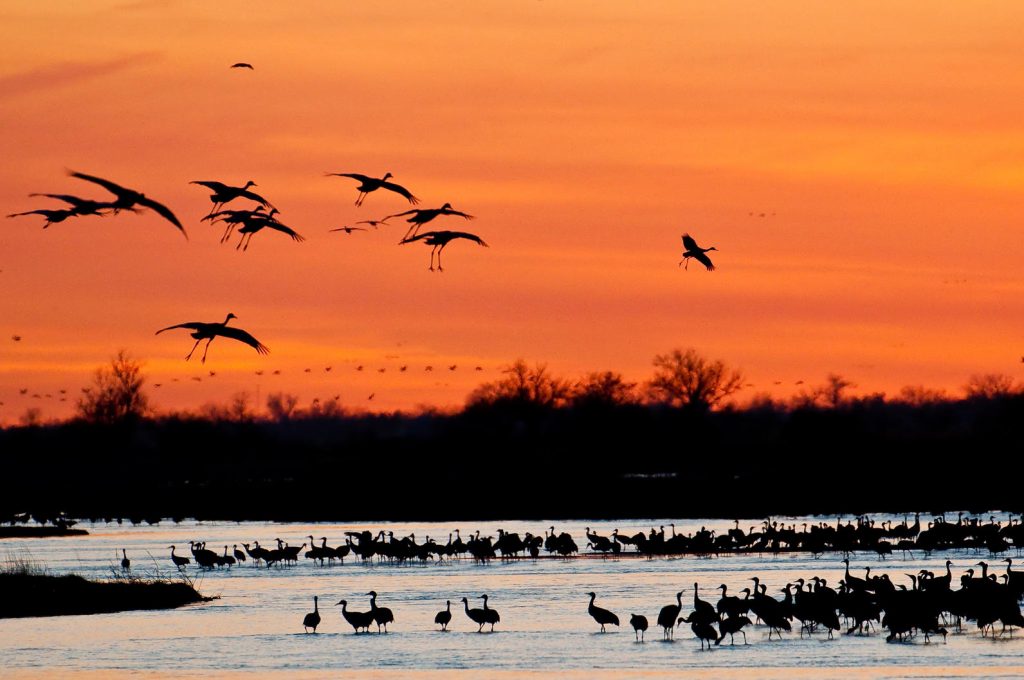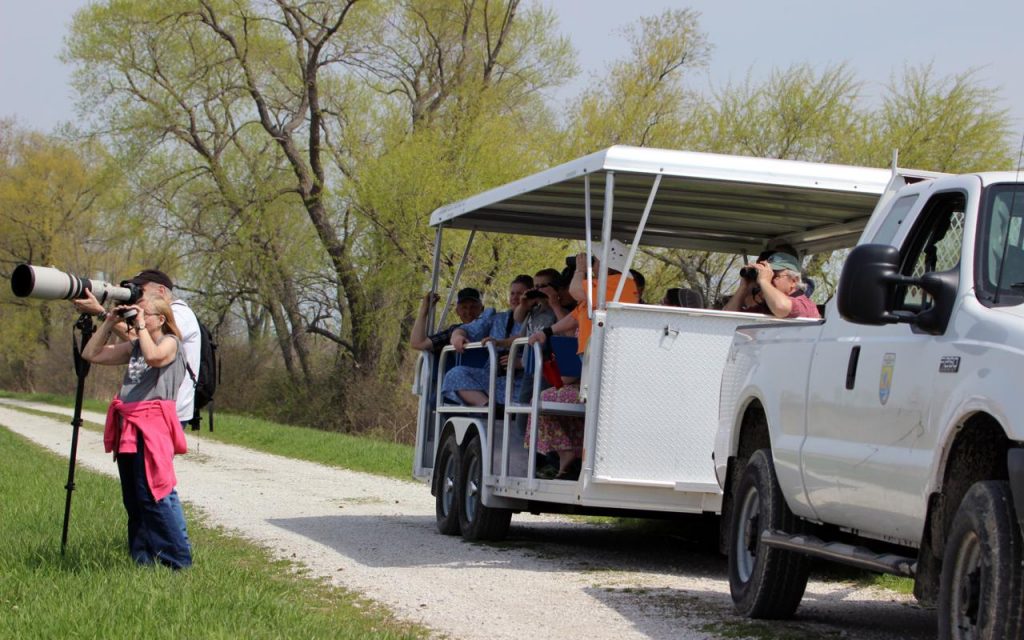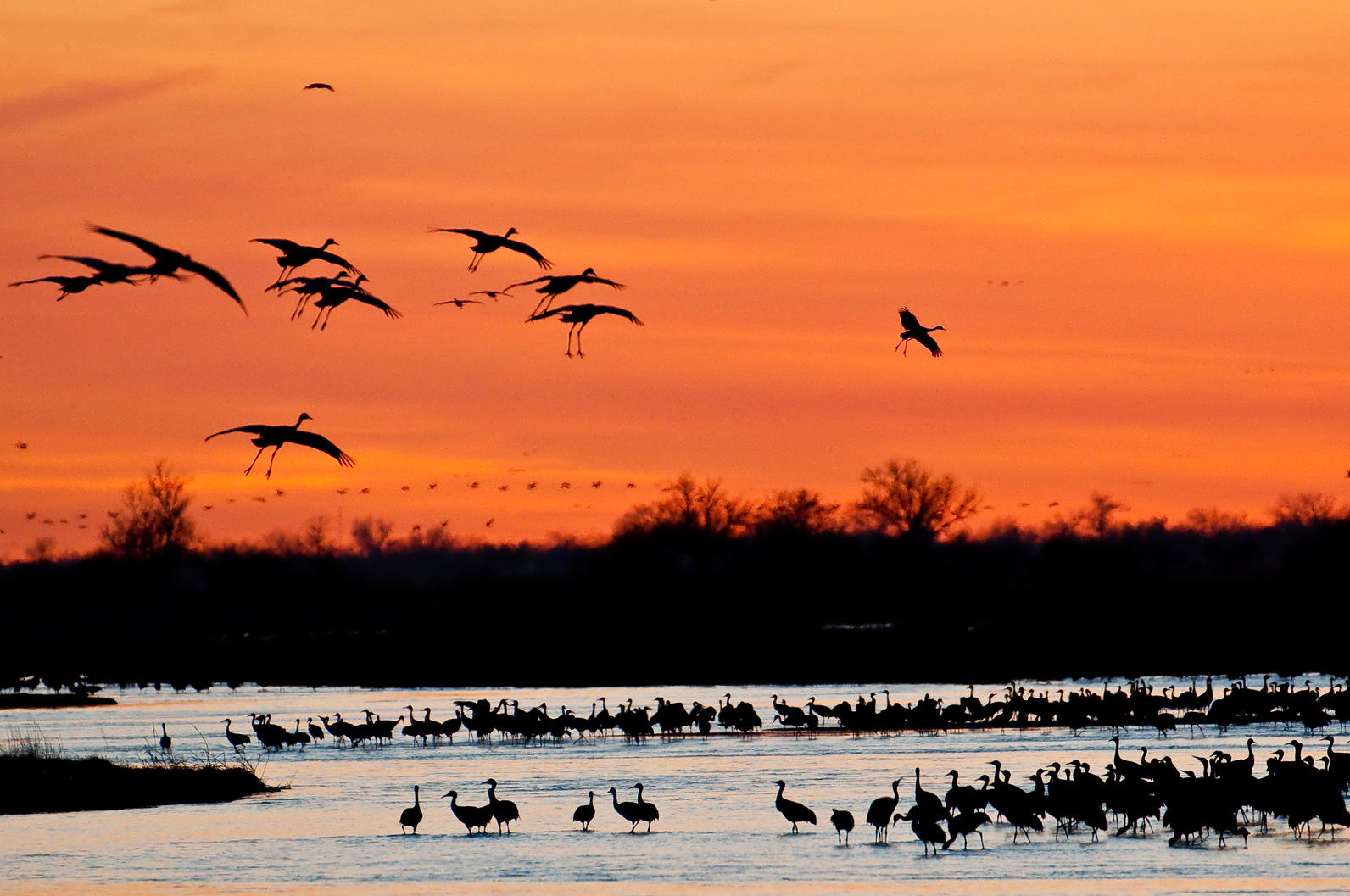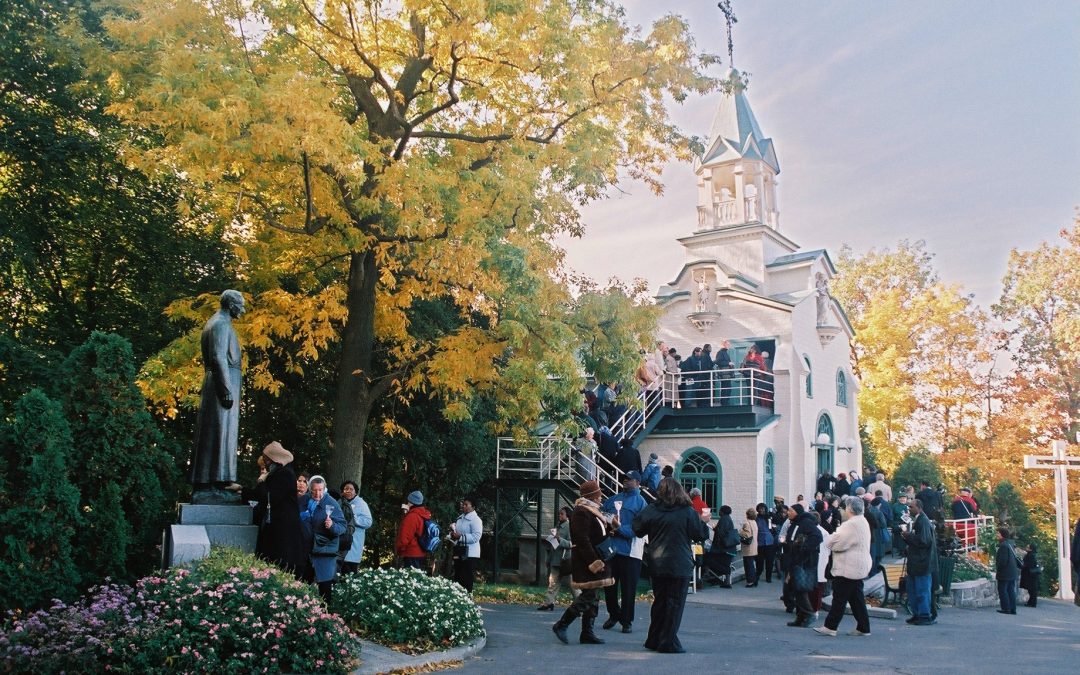Witness hundreds of winged species in these sanctuaries and nature centers
What environment do you typically imagine for a relaxed day of birdwatching? An isolated island, old-growth forest or perhaps a serene prairie? The secluded woods and rivers of the Midwest are a haven for flying friends and visitors alike, with many staffed by avian experts and with nature centers that can accommodate large groups. The birdwatching outposts in these six Midwestern states are only a small sample of the locations where groups keep their eyes to the sky.
Minnesota

Wabasha, a town 90 minutes southeast of the Twin Cities and located on a wide bend in the Mississippi River, attracts migratory birds with its rich fish supply. During the bald eagle’s tenure on the endangered species list, Wabasha was a rare area where the birds would consistently nest. Today, the town is home to the National Eagle Center, a build-ing dedicated to educating the public on this symbol of American patriotism. Thousands of birdwatchers descend upon the town every autumn to witness the birds’ migration south, and the city’s many cliffsides offer prime views of the eagles catching fish in the river. From October through March the center hosts outings in which your group, supplied with telescopes and a guide, can spot these magnificent creatures.
Those who prefer indoor warmth can still experience an eagle encounter. Wabasha’s 15,000-square-foot inter-pretive center features rotating exhibits that explore local conservation efforts, birds of prey biology and local history. The building also houses injured bald and golden eagles and hosts daily programs for schoolchildren and coach tours to meet the friendly avian ambassadors. Demonstrations led by volunteer naturalists will highlight the birds’ incredible sight, speed and talon strength, and presenters can field your group’s questions.
Indiana

Indiana Congressman Finly H. Gray in 1943 donated the property encompassing the Mary Gray Bird Sanctuary to honor his daughter—an avid birdwatcher. Now overseen by the Indiana Audubon Society, the sanctuary covers over 700 acres of forest, meadows and ponds that attract songbirds and other wildlife throughout the spring and summer. Nesting songbirds that return to the area include pileated woodpeckers, dark-eyed juncos and cerulean warblers, and visitors can spot deer and coyotes in the open prairie fields. Your group can spot the birds on the 10 miles of hiking trails or at four ponds where waterfowl converge. There are also two feeding stations where you can assist local volunteers band ruby-throated humming-birds for tracking and identification.
The privately owned Potawatomi Wildlife Park outside of Bourbon, Indiana allows your group to hike along five miles of trail and through protected prairies free of charge. Gazebos and picnic pavilions are spread throughout the property, including the banks of the Tippecanoe River. This tributary to the mighty Ohio attracts orioles, waterthrushes and tanagers throughout the summer months, and a canoe landing is available for groups who wish to view the birds downstream.
Ohio

Much of the area east of Toledo was once the Great Black Swamp, a 1,500-square-mile network of wetlands and forests. Industrialization has decimated much of the local environment, but 6,500 acres of protected wooded habitat remain in the Ottawa National Wildlife Refuge. Your group can choose dozens of trails that mean-der past creeks and estuaries that waterfowl call home and spot flocks of dunlin along the banks of the Metzger Marsh. Mudflats in the Crane Creek estuary and managed wetlands host large numbers of shorebirds, and wintering tundra swans are common in the coastal marshes. Binoculars and field guides are available for rent from the visitors center, and tours with a certified group guide can be arranged.
Groups that would prefer an urban birding experience can respectfully walk through the Green Lawn Cemetery in Columbus—a property that attracts watchers from across the nation. The plot is nearly two centuries old and features eroding bridges and mature trees—perfect habitats for screech owls and winter finches. The gum produced by the cemetery’s mature trees attracts migrating pine siskin finches, famous for their yellow-patched tails and exceptional agility, and your party can hear their distinctive song among the oak trees. The Ohio Ornithological Society holds regular hikes through the property, and the guides can point out notable nesting areas among the tombstones of famous Ohioans.
Michigan
The largest landmass in Lake Michigan, Beaver Island is a 12,000-acre birdwatching hotspot and a critical stopover site for migratory birds flying to and from Canada. Familiar residents are chickadees, wood-peckers and grouse, while seasonal visitors include snowy owls, horned larks and long-tailed ducks. In the spring, Iron Ore Bay is overtaken by palm warblers and white-crowned sparrows as they rest before their journey south, while your group can spot the endangered piping plover along the sandy beaches. More than 35 designated viewing sites (often equipped with feeders or bird-houses) are scattered across the island for your group to explore, while conveniently located pavilions are ideal for picnics and day-long excursions.
Groups who prefer a landlocked experience will discover 128 acres of rolling fields and kettle hole marshes at Michigan’s Otis Farm Bird Sanctuary. Located between Grand Rapids and Kalamazoo, the site is a critical habitat for the cerulean warbler, a songbird that annually migrates thousands of miles from the Andes Mountains. The species’ habitat is rapidly declining in South America due to increased land development by coffee growers, but here you can spot their beautiful blue plumage along with grasshopper sparrows and ospreys in the towering beech trees.
Wisconsin
![]()
The nonprofit International Crane Foundation complex south of the Wisconsin Dells houses the largest variety of cranes anywhere in the world—15 species in all. The center’s signature exhibit is “The Spirit of Africa,” an enclosure that tells the story of four species native to sub-Saharan Africa and how their oak savannah habitat is threatened by modern urban development. The friendly aviculture staff can guide you through the preserved prairies of bluestem grasses, while placards explain crane subspecies from China and Australia. Large parties are encouraged to register for a two-hour tour in which a staff member explains crane biology and conservation efforts abroad. The center also hosts numerous group-friendly events through-out the year, including the Cranes of the World Festival (which welcomes international bird experts) and keeper talks (where volunteers provide a behind-the-scenes look at the birds’ diet and medical needs).
Groups seeking an up-close look at Canada geese should venture an hour north to Fond du Lac County. Here they can explore Horicon Marsh, the largest freshwater cattail marsh in the country and 32,000 acres of habitat for great blue herons, red-headed woodpeckers and purple martin swallows. At Blue Heron Landing, your group can climb aboard a pontoon and float through the natural “canals” that intersect the marshgrass and spot the 305 local species with a provided checklist. The friendly captain will point out tough-to-spot nests and explain the region’s history, from its glacier melt formation to its ancient Potawatomi residents.
Nebraska
During a six-week period in February and March, nearly 80 percent of the world’s sandhill crane population passes through central Nebraska. Nearly 10 million ducks, geese, eagles and cranes spend their mating season in the Platte River Valley of Lincoln County, feeding off fish in the shallow estuaries and gathering in the barren fields. While any group passing through can stop by designated viewing areas outside of North Platte during daylight hours, those looking for a more intimate experience should consider renting a “blind” through the Audubon Society’s Rowe Sanctuary. These camouflaged structures are placed overnight throughout the birds’ mating grounds, and you can view and photograph mating rituals through small slits that render groups invisible to the birds. While this experience isn’t suitable for every group (the shelters have no indoor plumbing and participants cannot leave before day-break), there is no better way to intimately observe these creatures.
Groups seeking a less extreme crane experience should consider the Iain Nicholson Audubon Center outside of Kearney. Tour guides will lead your group on a short hike to various lookout blinds along the river (no overnight stay required) and discuss the elaborate migration patterns of the cranes, which often travel in flocks of thousands. Avid birders may also want to observe the prairie chicken spring courtship rituals. Male prairie chickens, found in the grasslands of central Nebraska, perform an intriguing courtship display characterized by stomping feet, towering leaps and resonant booming noises.






